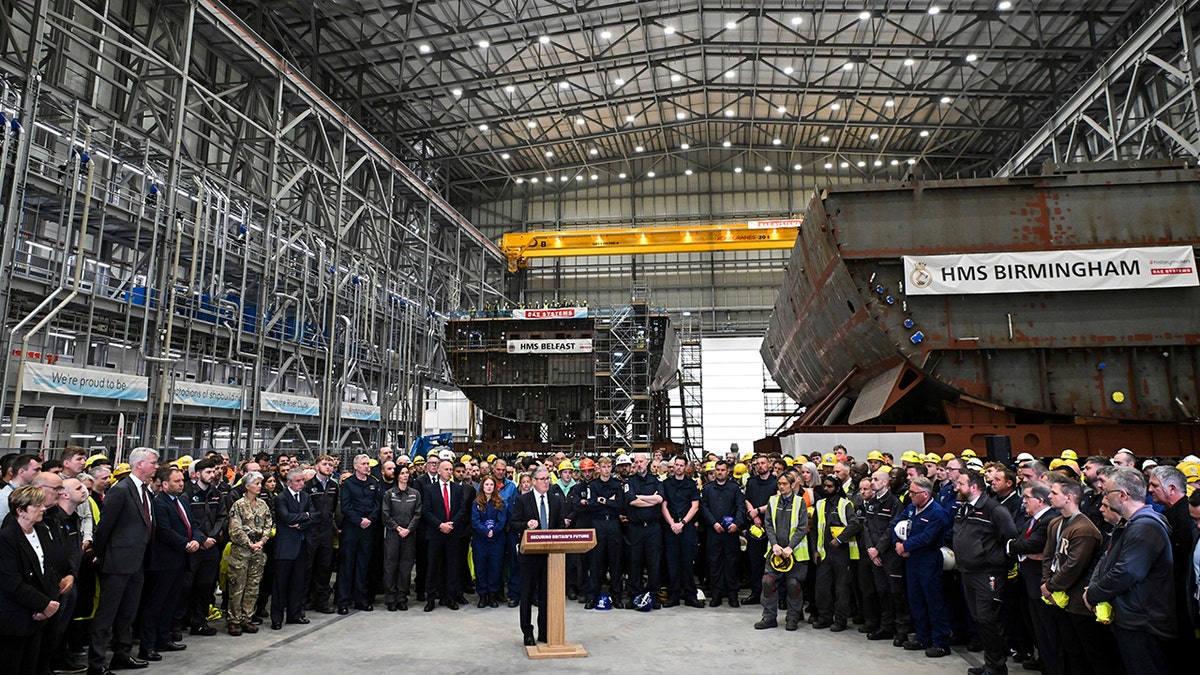Articles in this Cluster
03-06-2025
Germany’s defence chief, Gen Carsten Breuer, warned that Russia could be capable of attacking a NATO member—particularly in the Baltic region—by 2029 or earlier, citing Russia’s rapid military buildup, including production of about 1,500 tanks annually and millions of artillery rounds. Speaking at the Shangri-La Dialogue, he highlighted vulnerabilities like the Suwalki Gap and recent hybrid threats (undersea cable damage, cyberattacks, drone sightings) as signs Moscow views its conflict as part of a wider struggle with NATO. Breuer urged accelerated European rearmament and deterrence, insisted NATO remains unified despite differing national perspectives, and noted Germany’s shifting stance toward higher defense spending. However, he acknowledged Europe’s industrial ramp-up will take years and comes amid U.S. focus on the Indo-Pacific.
Entities: Gen Carsten Breuer, Russia, NATO, Baltic region, Suwalki Gap • Tone: urgent • Sentiment: negative • Intent: warn
03-06-2025
U.K. Prime Minister Keir Starmer announced a major defense overhaul to counter Russia, pledging increased military spending, up to 12 new AUKUS nuclear-powered, conventionally armed submarines, a £15 billion boost to the nuclear deterrent, and expansion of long-range weapons and cyber capabilities. The plan accepts all 62 recommendations of a new strategic review, focuses on lessons from Ukraine (including drones), and aims to ready the army for potential conflict in Europe. Defense spending is targeted to reach 2.5% of GDP by 2027, with an “ambition” of 3% by 2034, though funding details remain uncertain. The move signals resolve to Moscow and aligns with NATO burden-sharing amid shifting U.S. policy under President Trump. Opposition supports more defense funds but questions affordability.
Entities: Keir Starmer, Russia, AUKUS, United Kingdom, NATO • Tone: analytical • Sentiment: neutral • Intent: inform
03-06-2025
UK Prime Minister Keir Starmer announced a shift to “war-fighting readiness” as the central mission of the armed forces in response to growing Russian threats and a more volatile security environment. Following a strategic defense review, the government will adopt all 62 recommendations, prioritize NATO integration, and accelerate innovation at a “wartime pace,” aiming for a more integrated and lethal force by 2035. Plans include expanding the nuclear-powered submarine fleet via AUKUS, investing £15 billion in the nuclear arsenal, boosting conventional stockpiles with up to 7,000 long-range weapons, and delivering the largest forces pay rise in 20 years. Defense spending will rise to 2.5% of GDP by 2027, with a longer-term goal of 3%, as the UK seeks to deter Russian aggression, support Ukraine, and strengthen Europe’s security.
Entities: Keir Starmer, United Kingdom, Russia, NATO, AUKUS • Tone: analytical • Sentiment: neutral • Intent: inform
03-06-2025
The U.K. unveiled its most sweeping defense overhaul since the Soviet collapse, boosting spending and capabilities to deter Russia and signal commitment to NATO amid shifting U.S. policy under Trump. Prime Minister Keir Starmer pledged a “battle-ready” force, including up to 12 AUKUS nuclear-powered, conventionally armed submarines, £15 billion for the nuclear deterrent, new munitions factories, long‑range weapons, expanded drones and autonomous naval systems, a cyber command, £1 billion for air defenses, and a home guard for critical infrastructure. Defense spending is slated to reach 2.5% of GDP by 2027 with an “ambition” of 3% before 2034, though funding remains uncertain. The plan aims to create manufacturing jobs, bolster Europe’s defenses, and reinforce a NATO-first strategy, but experts say it’s a broad intent lacking detailed implementation.
Entities: United Kingdom, NATO, Russia, Keir Starmer, AUKUS submarines • Tone: analytical • Sentiment: neutral • Intent: inform
